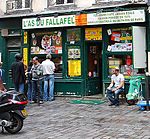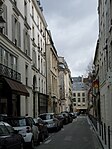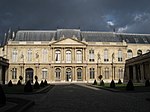Institut supérieur européen de gestion group
Business schools in FranceEducation in LilleEducation in LyonEducation in NantesEducation in Nouvelle-Aquitaine ... and 4 more
Education in ParisEducation in StrasbourgEducation in ToulouseEducational institutions established in 1980

The Institut supérieur européen de gestion group (ISEG group, French for Advanced European Institute of Management) is a group of two business schools, ISEG Marketing & Communication School and ISG Programme Business & Management, the former created in 1980, and the latter formed in 2014 when ISEG Business School and ISEG Finance School, each also founded in 1980, merged. In September 2017, ISEG Business & Finance School merged with the programme Business & Management of the ISG Business School. It is based in Paris, Bordeaux, Lille, Lyon, Nantes, Strasbourg and Toulouse, France. The group is mainly focused on teaching entrepreneurship.
Excerpt from the Wikipedia article Institut supérieur européen de gestion group (License: CC BY-SA 3.0, Authors, Images).Institut supérieur européen de gestion group
Rue des Francs Bourgeois, Paris 3rd Arrondissement (Paris)
Geographical coordinates (GPS) Address External links Nearby Places Show on map
Geographical coordinates (GPS)
| Latitude | Longitude |
|---|---|
| N 48.857986944444 ° | E 2.3601675 ° |
Address
Institut Supérieur Européen de Gestion
Rue des Francs Bourgeois
75003 Paris, 3rd Arrondissement (Paris)
Ile-de-France, France
Open on Google Maps











